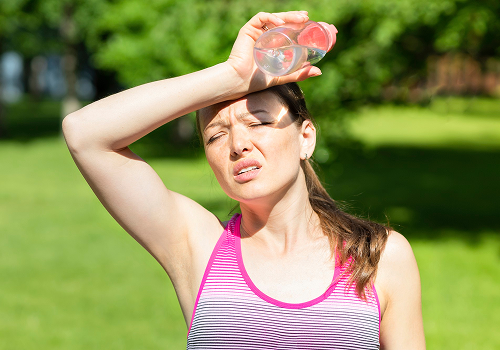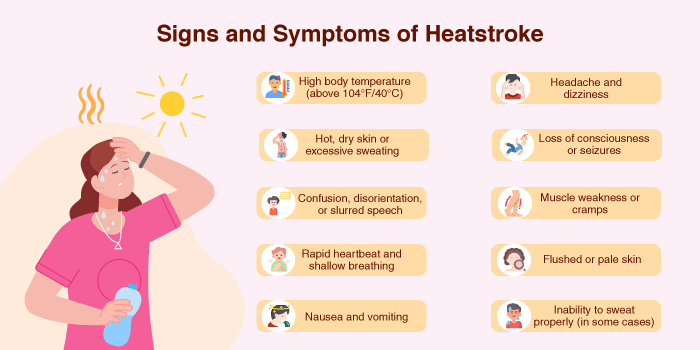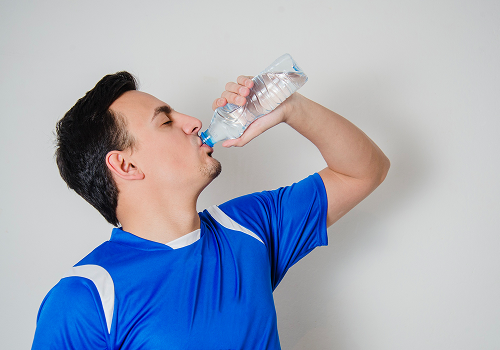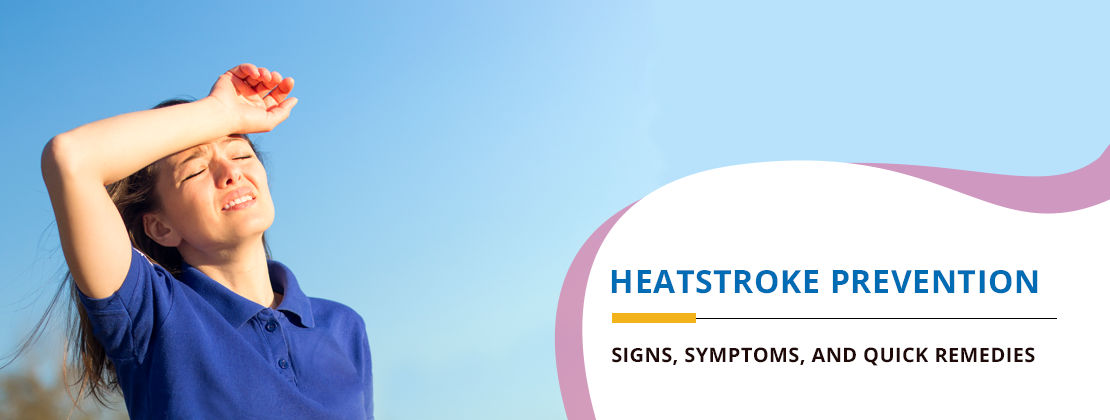What is a Heatstroke?

Heatstroke (also written as heat stroke) is a serious condition that happens when the body can’t control its temperature anymore because it has been exposed to high temperatures for a prolonged duration.
This condition needs prompt medical attention before it causes organ damage or even death in some cases.
Unlike heat exhaustion, which is a milder form of heat-related illness, exertional heatstroke and non-exertional heatstroke can be life-threatening if untreated.
A heatstroke occurs when the body temperature goes beyond 104°F (40°C), causing problems in the nervous system as well as other parts of the body. Understanding the signs of heatstroke and learning how to treat heatstroke effectively can be crucial in saving lives.
Those people who toil under the sun or reside in hot areas have a higher risk of getting heatstroke.
There are two primary types of heatstroke:
- Exertional Heatstroke: This occurs due to intense physical activity in hot weather, usually in sportsmen, soldiers, and workers under hot conditions.
- Non-Exertional (Classic) Heatstroke: This typically affects vulnerable populations such as elderly individuals, infants, and those with chronic illnesses. It occurs slowly over time when one is continually exposed to high heat with little or no cooling.
Signs and Symptoms of Heatstroke

Recognising mild heatstroke symptoms early can help prevent severe complications. Common signs of heatstroke include:
- High body temperature (above 104°F/40°C)
- Hot, dry skin or excessive sweating
- Confusion, disorientation, or slurred speech
- Rapid heartbeat and shallow breathing
- Nausea and vomiting
- Headache and dizziness
- Loss of consciousness or seizures
- Muscle weakness or cramps
- Flushed or pale skin
- Inability to sweat properly (in some cases)
In some cases, home remedies may work. However, in other cases, heatstroke treatment at home may fail, and medical intervention will be needed. Failure of the body to control temperature can result in organ failure, coma, or death if not attended to immediately.
Quick Remedies for Heatstroke

When someone exhibits signs of heatstroke, taking immediate action can be life-saving. Here are the essential heatstroke first aid steps:
- Move to a Cooler Area: Shift the person to a shaded or air-conditioned space to prevent further heat exposure.
- Lower Body Temperature: Apply cool water to the skin, use ice packs on armpits and groin, or use a fan to enhance cooling. You can also place a damp towel over the person’s body to speed up the cooling process.
- Hydrate: Offer cool water or electrolyte-rich drinks if the person is conscious and alert. Avoid alcohol or caffeinated beverages, as they can worsen dehydration.
- Remove Excess Clothing: Loosening or removing tight clothing can aid in cooling down the body and allow better airflow.
- Monitor Vital Signs: If symptoms worsen or if the person loses consciousness, seek immediate medical help from a multispeciality hospital in India.
- Immersion in Cold Water: If available, placing the affected person in a tub of cold water can help rapidly reduce body temperature. However, this should be done with caution and only if the individual is fully conscious.
Can Heatstroke Be Prevented?
Yes, it is possible to prevent heatstroke. Understanding how to prevent heatstroke is key to avoiding life-threatening situations. Follow these preventive measures:
- Stay Hydrated: In hot weather, it is important to drink a lot of fluids. Drinking water and other drinks that contain electrolytes will replenish the lost water content in the body and prevent dehydration.
- Avoid Strenuous Activities in Extreme Heat: When you have to do your exercises or jobs outside, plan to get them done in the early morning or late afternoon. Avoid going out in peak hours (10 am – 4 pm).
- Dress Appropriately: Wear lightweight, light-coloured, and loose-fitting clothing. Dark colours absorb more heat, increasing body temperature.
- Use Sunscreen and Hats: Protecting your skin from direct sunlight can reduce body heat absorption. A wide-brimmed hat and UV-protective sunglasses can help prevent sunburn and heat exposure.
- Acclimate to Heat Gradually: If you are new to a hot climate, allow your body to adjust over several days. Sudden exposure to extreme heat can increase the risk of heat exhaustion.
- Recognise Early Signs: If you start feeling lightheaded, fatigued, or excessively thirsty, take immediate action to cool down.
- Use Fans and Air Conditioning: If available, air conditioning can significantly reduce the risk of heat-related illnesses.
Risk Factors for Heatstroke
Several factors can increase the risk of developing heatstroke, including:
- High Temperatures and Humidity Levels: The body struggles to cool down when humidity is high, as sweat does not evaporate efficiently.
- Dehydration: Lack of adequate fluid intake makes it harder for the body to regulate temperature.
- Excessive Physical Activity: Engaging in strenuous exercises in hot weather without proper hydration increases the risk of exertional heatstroke.
- Certain Medications: Some drugs, such as diuretics, antihistamines, and beta-blockers, can impair the body’s ability to dissipate heat.
- Underlying Health Conditions: Heart disease, obesity, and diabetes can make individuals more susceptible to heat-related illnesses.
- Age: Older adults and young children are less efficient at regulating body temperature and are more vulnerable to heat exhaustion and heatstroke.
- Alcohol and Drug Use: Alcohol can dehydrate the body and interfere with temperature regulation, while stimulant drugs can raise body temperature and increase the risk of overheating.
Conclusion
Heatstroke is a preventable yet serious condition that requires awareness and quick action. Recognising the signs of heatstroke, knowing how to avoid heatstroke, and understanding heatstroke treatment at home can help minimise risks. In cases of severe heatstroke, seeking medical help at a trusted multispeciality hospital is crucial. By staying hydrated, wearing appropriate clothing, and avoiding excessive heat exposure, you can effectively reduce the likelihood of heat-related illnesses and stay safe during hot weather conditions.
Understanding how to treat heatstroke promptly can save lives. Whether you are an athlete, an outdoor worker, or someone living in a hot climate, taking proactive steps to prevent exertional heatstroke and heat exhaustion is essential. Heatstroke can be avoided and prevented if individuals know how to protect themselves against heat, seek medical help when necessary, and follow appropriate measures, which will also protect other individuals around.



